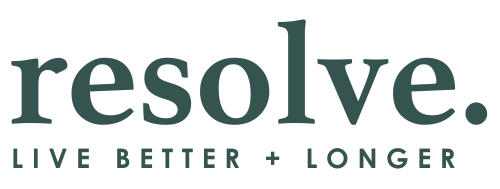Concussions are often dismissed as “just a bump on the head,” but at the cellular level, they’re anything but minor. A concussion is a mild traumatic brain injury (mTBI) that triggers a complex cascade inside the brain—one that can resolve quickly with the right support, or linger for weeks and months as post-concussive syndrome (PCS).
What Causes a Concussion?
A concussion occurs when the brain rapidly shifts inside the skull due to a blow, fall, or sudden acceleration/deceleration. This movement stretches and stresses neurons and their axons (the brain’s wiring), setting off a chain reaction.
Recognizing Concussion Symptoms
Symptoms may appear immediately or develop hours later:
- Headache or pressure in the head
- Confusion or brain fog
- Dizziness or balance issues
- Nausea or vomiting
- Blurred vision or sensitivity to light/sound
- Difficulty concentrating or remembering
- Fatigue, irritability, or sleep changes
Seek urgent care if you experience worsening headache, repeated vomiting, weakness, seizures, or changes in speech/vision.
The Pathophysiology: What Happens at the Cellular Level
- Mechanical stretch & shear forces Rapid acceleration/deceleration stretches neurons and axons (the wiring of the brain). This disrupts the integrity of cell membranes and ion channels.
- Ion imbalance Potassium leaks out, calcium rushes in. Neurons now require huge amounts of ATP (cellular energy) to restore balance—but their ability to make ATP is impaired.
- Energy crisis Mitochondria (the cell’s power plants) are damaged, leading to a mismatch: the brain is demanding more energy but producing less. This is why people feel foggy, slow, or exhausted.
- Excitotoxicity Excess glutamate (a stimulating neurotransmitter) is released. Too much glutamate overstimulates neurons, creating further stress and cell vulnerability.
- Inflammatory response Microglia (the brain’s immune cells) activate. A little inflammation helps with repair, but too much or too prolonged can perpetuate damage.
- Axonal injury & disconnection If axons are stretched enough, transport systems inside the neuron break down. Communication between brain regions falters, which explains problems with focus, memory, and mood.
Recovery vs. Post-Concussive Syndrome (PCS)
- Timely Recovery: Energy production stabilizes, inflammation resolves, and neurons repair connections. With rest, gradual activity, sleep, and good nutrition, most people improve within 1-3 weeks.
- PCS Development: Mitochondria remain dysfunctional, inflammation persists, and blood flow to injured regions stays poor. Risk is higher with repeat concussions, premature return to activity, or underlying conditions like migraines, mood disorders, or metabolic disease.
https://www.sciencedirect.com/science/article/pii/S2324242625000130?
Functional Medicine Support for Recovery
Our Concussion Recovery Protocol provides a roadmap
- Immediate Priorities: Sleep, limit screen time, avoid alcohol, and protect from re-injury.
- Nutrition for Brain Repair: Protein at every meal, colorful vegetables, omega-3s, hydration, and reduced processed sugar.
- Lifestyle Foundations: 8–9 hours of sleep, gentle movement, stress management, daily sunlight.
- Targeted Nutritional Support: Omega-3s, magnesium threonate, curcumin, vitamin D3/K2, B-complex, NAC, creatine. Advanced
- Cognitive & Neurological Rehab: Gradual return to tasks, brain training apps, vestibular/vision therapy, and sensory support.
Advanced and Emerging Therapies
For persistent post-concussive syndrome, researchers and clinicians are exploring therapies that go beyond the basics:
- Peptides (BPC-157): Experimental but promising for tissue repair, angiogenesis, and neuroprotection.
- NAD+ Support (NMN, NR, NAD+ IVs): Boost mitochondrial repair and energy metabolism in energy-starved neurons.
- Hyperbaric Oxygen Therapy (HBOT): Increases oxygen delivery to injured brain tissue, improving metabolism and reducing inflammation; several TBI studies show benefit.
- Neurofeedback: Trains brainwave patterns to improve focus, reduce headaches, and stabilize mood.
- Vagus Nerve Stimulation: Supports parasympathetic activity, reducing neuroinflammation and improving autonomic balance.
- Transcranial Magnetic Stimulation (TMS): Uses magnetic fields to stimulate neural circuits involved in mood, cognition, and recovery.
- Photobiomodulation (Red/NIR Light): Supports mitochondrial repair and blood flow in injured regions.
- Ketogenic Nutrition / Exogenous Ketones: Provides alternative fuel when glucose metabolism is impaired.
Putting It All Together
- Tier 1: Foundations (sleep, nutrition, hydration, gentle movement, stress reduction).
- Tier 2: Targeted nutrients and supplements.
- Tier 3: Advanced modalities (HBOT, neurofeedback, TMS, vagus nerve stimulation, NAD+ therapies, peptides, photobiomodulation).
The key is sequence—lay the foundation first, then layer advanced therapies if recovery stalls.
Conclusion
A concussion isn’t just a bump on the head—it’s an energy crisis in the brain. With timely rest, nutrition, and targeted support, the brain has remarkable capacity to heal. Functional medicine offers a comprehensive toolkit for restoring balance, reducing inflammation, and promoting neuroplasticity—helping prevent lingering post-concussive symptoms and protecting long-term brain health.
👉 Want the full step-by-step approach? Download our Concussion Recovery Protocol PDF



